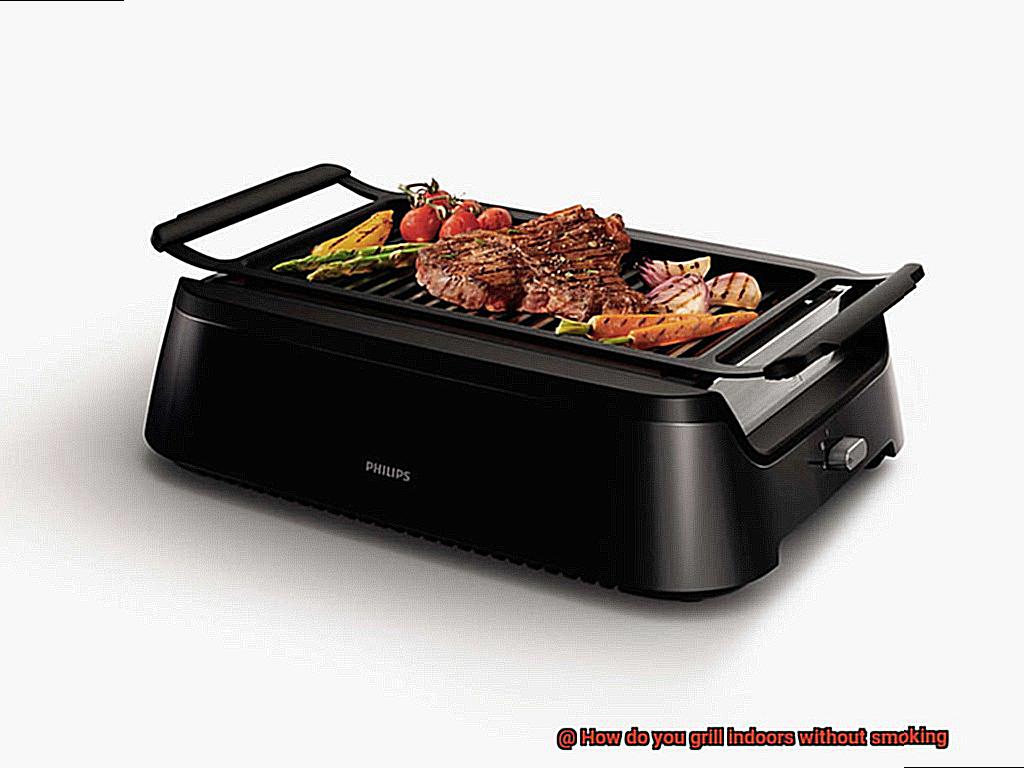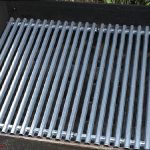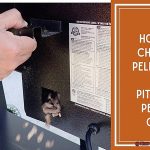Do you love the taste of grilled food but hate dealing with unpredictable weather? Do you dream of savoring a perfectly grilled steak without having to brave the elements? Well, we have some great news for you – indoor grilling is possible without smoking up your whole house. That’s right, in this blog post, we’ll explore the tips and tricks for grilling indoors like a pro.
But first, let’s address the elephant in the room – how do you grill indoors without causing smoke? The answer lies in choosing the right equipment. An indoor grill with a built-in fan or a smokeless grill is your best bet. These grills are designed to minimize smoke and prevent it from escaping into your home. But that’s not all; there are other factors to consider as well.
Ready to dive deeper into the world of indoor grilling? We’ve got you covered. From preheating your grill at the right temperature to using just enough oil to prevent sticking and smoking, we’ll walk you through every step of the process. With our tips and tricks, you’ll be able to impress your family and friends with juicy burgers, succulent chicken breasts, and perfectly cooked vegetables.
So why wait? Get ready to take your indoor grilling game to the next level. Follow along as we show you exactly how to grill indoors without smoking up your house.
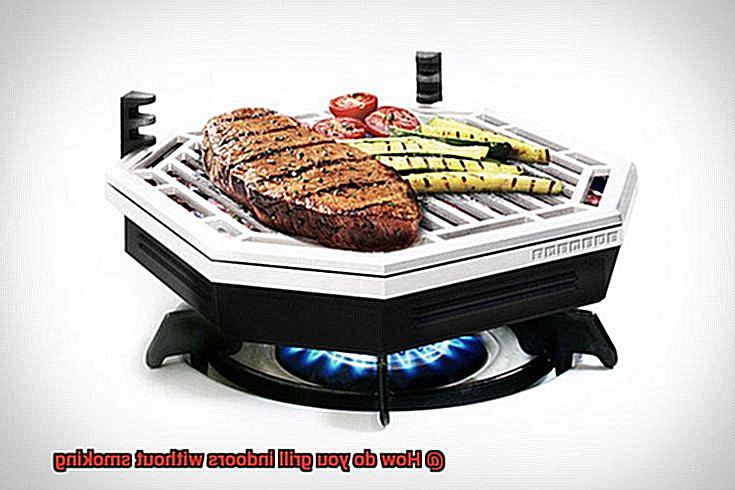
Contents
Choosing the Right Grill
When it comes to indoor grilling without smoking, choosing the perfect grill is essential. With so many options available in the market, each with its own set of advantages and disadvantages, making an informed decision can be a daunting task. In this article, we will explore the benefits and drawbacks of electric, gas, and stovetop grills for indoor grilling, helping you make a decision that best fits your needs.
Electric Grills
Electric grills have gained popularity among apartment dwellers who want to enjoy grilled food inside their homes. These compact, portable, and smokeless grills use heating elements to cook food and are easy to use. They are also easy to clean, with some models featuring non-stick surfaces.
However, electric grills may not provide the same smoky flavor as traditional charcoal or gas grills. Additionally, they may not reach high temperatures as quickly as other types of grills.
Gas Grills
Gas grills are a popular option for indoor grilling due to their ability to reach high temperatures quickly and provide a smoky flavor to food. They use propane or natural gas to cook food and are perfect for searing steaks and burgers.
However, gas grills require proper ventilation because they can produce smoke. They are also more expensive than electric or stovetop grills and require regular maintenance.
Stovetop Grills
Stovetop grills are the most traditional type of indoor grill and work by placing a grill pan on top of a stove burner, providing a similar experience to outdoor grilling. These affordable and easy-to-use grills allow for a traditional grilling experience without breaking the bank.
However, stovetop grills can produce smoke and require proper ventilation. They may also take longer to heat up compared to electric or gas grills.
When it comes to choosing the right indoor grill, factors such as living space, cooking needs, and budget should be considered. Electric grills are ideal for small apartments or condos, while gas grills are better suited for larger homes with proper ventilation. Stovetop grills are a great option for those who want a traditional grilling experience without spending too much money.
Ensuring Proper Ventilation
If so, it’s crucial to understand the importance of proper ventilation. Without it, you risk filling your indoor space with harmful smoke and fumes. But don’t worry, I’m here to guide you on how to ensure proper ventilation while indoor grilling.
Here are some tips to help you achieve the perfect grilling experience indoors:
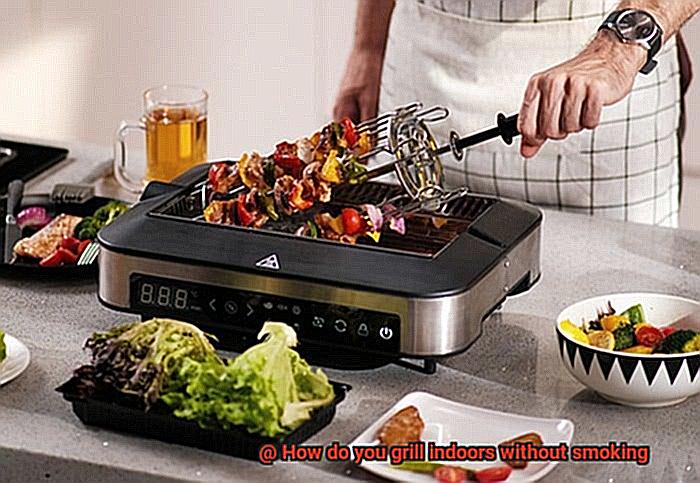
Use a grill with a built-in ventilation system
A grill with a built-in ventilation system is designed to eliminate smoke and fumes from your space. It’s the most effective way to ensure proper ventilation while indoor grilling. But if your grill doesn’t have this feature, don’t worry, there are other options.
Clear the area around the grill
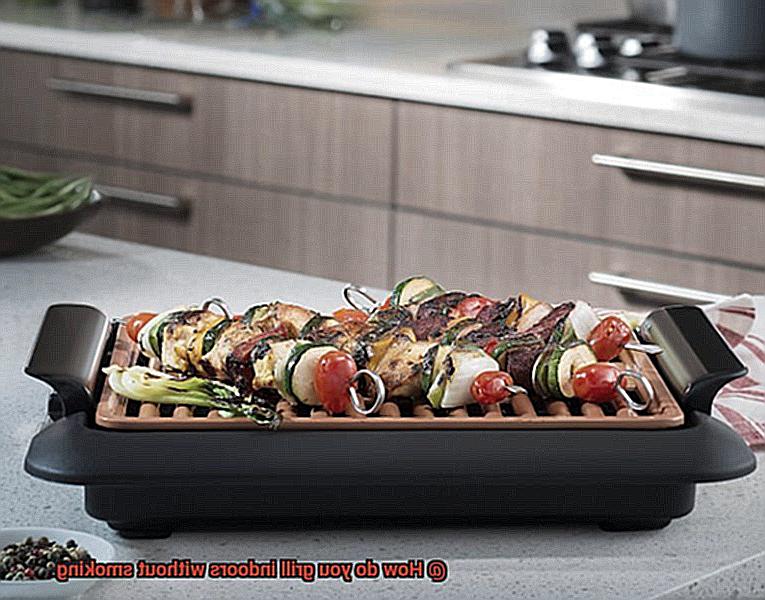
Make sure there are no obstructions around your grill that could impede proper airflow. This will prevent any build-up of smoke and fumes in the room. You should also use a hood or cover over the grill to contain the smoke and direct it towards the ventilation system.
Prioritize safety
If you are unable to properly ventilate the room, avoid indoor grilling altogether. The health risks associated with inhaling smoke and fumes can be serious. Always prioritize safety when grilling indoors.
Consider using a portable fan
If your grill doesn’t have a built-in ventilation system or if your space has poor airflow, consider using a portable fan to blow smoke out of the room.
Open windows and doors
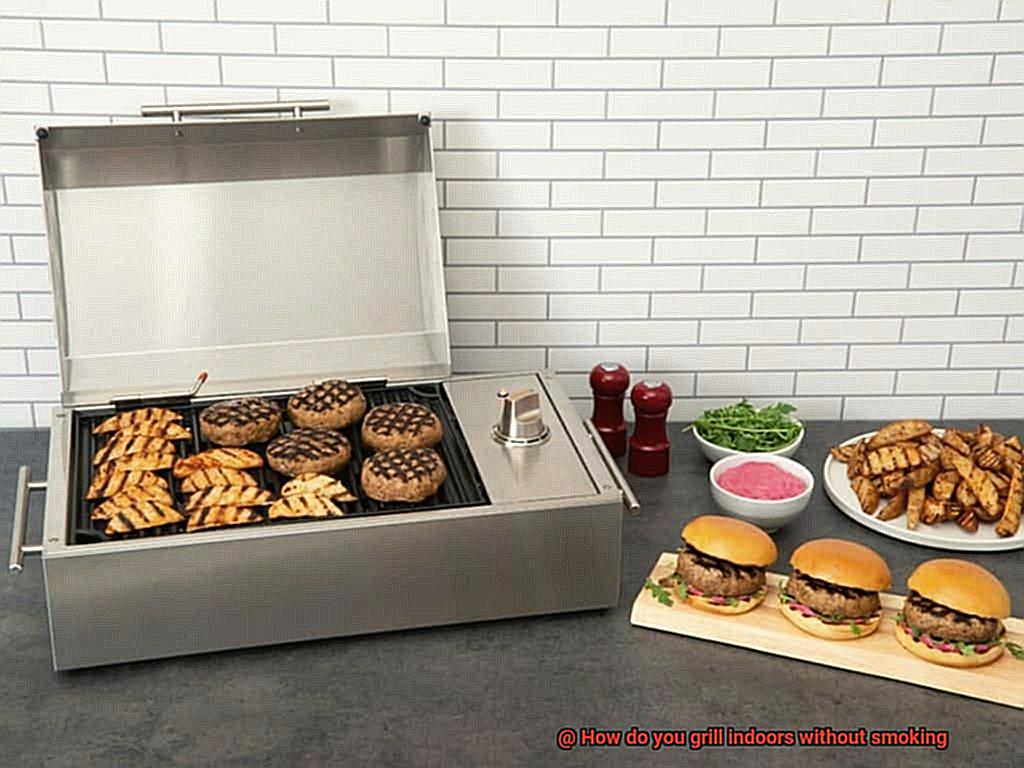
Opening windows and doors is another option to ensure proper ventilation. This allows for fresh air to enter and smoke and fumes to exit.
Prepping Your Food for Indoor Grilling
First and foremost, excess moisture is the enemy of indoor grilling. To avoid any smoking mishaps, pat your food dry with paper towels or opt for a marinade that contains acidic ingredients like lemon juice or vinegar. This will ensure that your food cooks evenly and without any unwanted smoke.
When it comes to seasoning, don’t be afraid to get creative. Use a dry rub or marinade to infuse your food with flavor and create a delicious crust on the grill. Brushing on a little oil can also help prevent sticking and promote even browning.
Choosing the right ingredients is also key to successful indoor grilling. Lean cuts of meat, poultry, or fish are ideal since they cook quickly and evenly. Thick cuts of meat can release excess moisture, leading to smoking and uneven cooking.
Consider the size and shape of your food as well. Smaller pieces will cook more quickly and evenly than larger ones. You can also cut your food into thin slices or strips to reduce cooking time and promote even cooking.
To recap, here’s a quick checklist for prepping your food for indoor grilling:
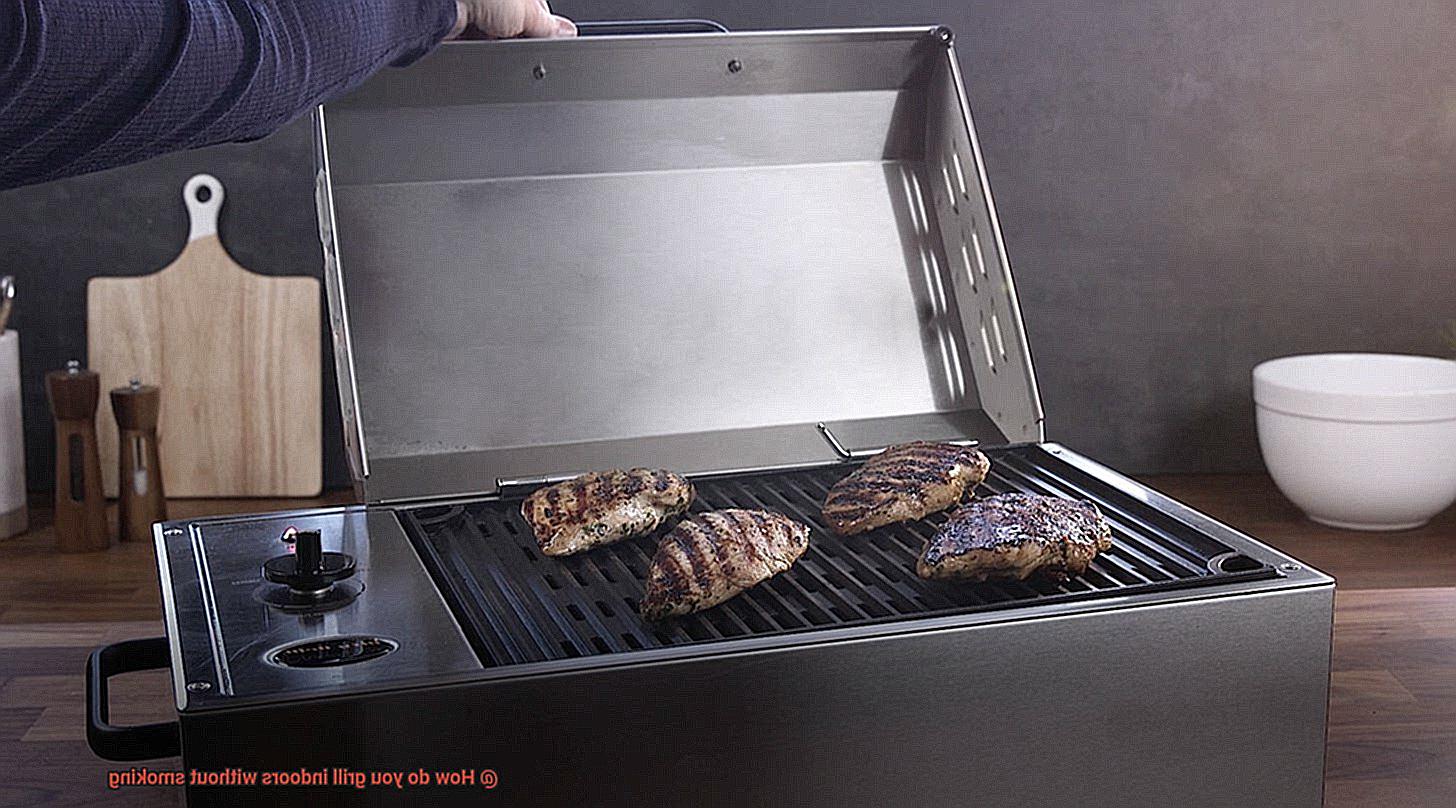
- Remove excess moisture by patting dry or using an acidic marinade
- Season with a dry rub or marinade, and brush on oil to prevent sticking
- Choose lean cuts of meat, poultry, or fish for even cooking
- Cut food into smaller pieces or thin slices for quicker, more even cooking
Keeping an Eye on Grill Temperature
Indoor grilling is a fantastic way to savor delicious meals without being at the mercy of the weather gods. However, indoor grilling can quickly turn into a smoke-filled disaster if the grill gets too hot. That’s why keeping an eye on the grill temperature is paramount when it comes to indoor grilling.
To help you keep your indoor grill under control, we’ve compiled some tips to ensure that your grilling experience is both safe and enjoyable.
Use a thermometer: A thermometer is an excellent tool for ensuring that your meat is cooked to perfection. It’s essential to insert the thermometer into the meat to ensure that it reaches the appropriate internal temperature. For those with built-in thermometers in their indoor grills, you can monitor the temperature of the grill itself.
Adjust your cooking method: Indirect heat is a great way to reduce smoke and prevent flare-ups. You can achieve this by placing a drip pan underneath the food, or by only heating one side of the grill and cooking on the other side. This method helps to produce evenly cooked and juicy results without any unwanted smoke.
Choose appropriate cooking oils: When it comes to indoor grilling, choosing the right oil can make all the difference. Certain oils like olive oil have low smoke points and can easily cause smoke when heated to high temperatures. Instead, opt for oils with high smoke points, such as canola or avocado oil, to minimize any potential smoke.
Avoiding Over-Crowding the Grill
If so, it’s time to master the art of avoiding over-crowding the grill. Over-crowding is a common mistake that can lead to unevenly cooked food and excess smoke production. But fear not. There are several tips you can follow to ensure a successful indoor grilling experience.
Firstly, choose the right size grill for your needs. A compact grill may be sufficient for small groups, but if you plan on cooking for larger crowds, invest in a larger grill with more cooking space. This will prevent overcrowding and allow for even heat distribution.
Next, preheat your grill before adding any food. This reduces smoke production and ensures that your food cooks evenly. Additionally, ensure that your grill is clean before you begin cooking. Built-up grease and debris can cause excess smoke and even flare-ups, ruining your meal.
When placing food on the grill, make sure to leave enough space between items so that they can cook properly. This may mean cooking in batches rather than all at once, but it will result in better-tasting food and less smoke. Remember to follow recipes and cooking guidelines carefully as different types of food require different cooking times and temperatures.
Utilizing a Marinade or Dry Rub
Indoor grilling is a culinary adventure that provides a delicious meal, especially when you add a little something extra to your meats. And what better way to elevate your indoor grilling game than with the marinade or dry rub? These two flavor-boosting techniques are guaranteed to take your meat from good to great.
Let’s start with marinades. A marinade is like a flavorful bath for your meat. It’s composed of oil, vinegar, spices, and other seasonings that work together to tenderize your meat and add some serious flavor. But before you start marinating, it’s essential to select oil with a high smoke point, such as canola or vegetable oil, to prevent excess smoke. Furthermore, avoid using too much sugar in your marinade since it can burn and create smoke. So, give your meat at least 30 minutes of marination so that all those delicious flavors can penetrate the meat. Trust us; it will be worth the wait.
Now, let’s talk about dry rubs. A dry rub is like a massage for your meat (minus the spa music). It’s a blend of spices and herbs that you rub onto your meat before grilling. The key to a good dry rub is even coating that ensures every bite of your meat is packed with flavor. You can also lightly spray your meat with cooking spray before applying the dry rub to help it stick better. However, be careful not to overdo it with salt in your rub since it can draw out moisture from the meat and make it tough.
Patting the Meat Dry with Paper Towels
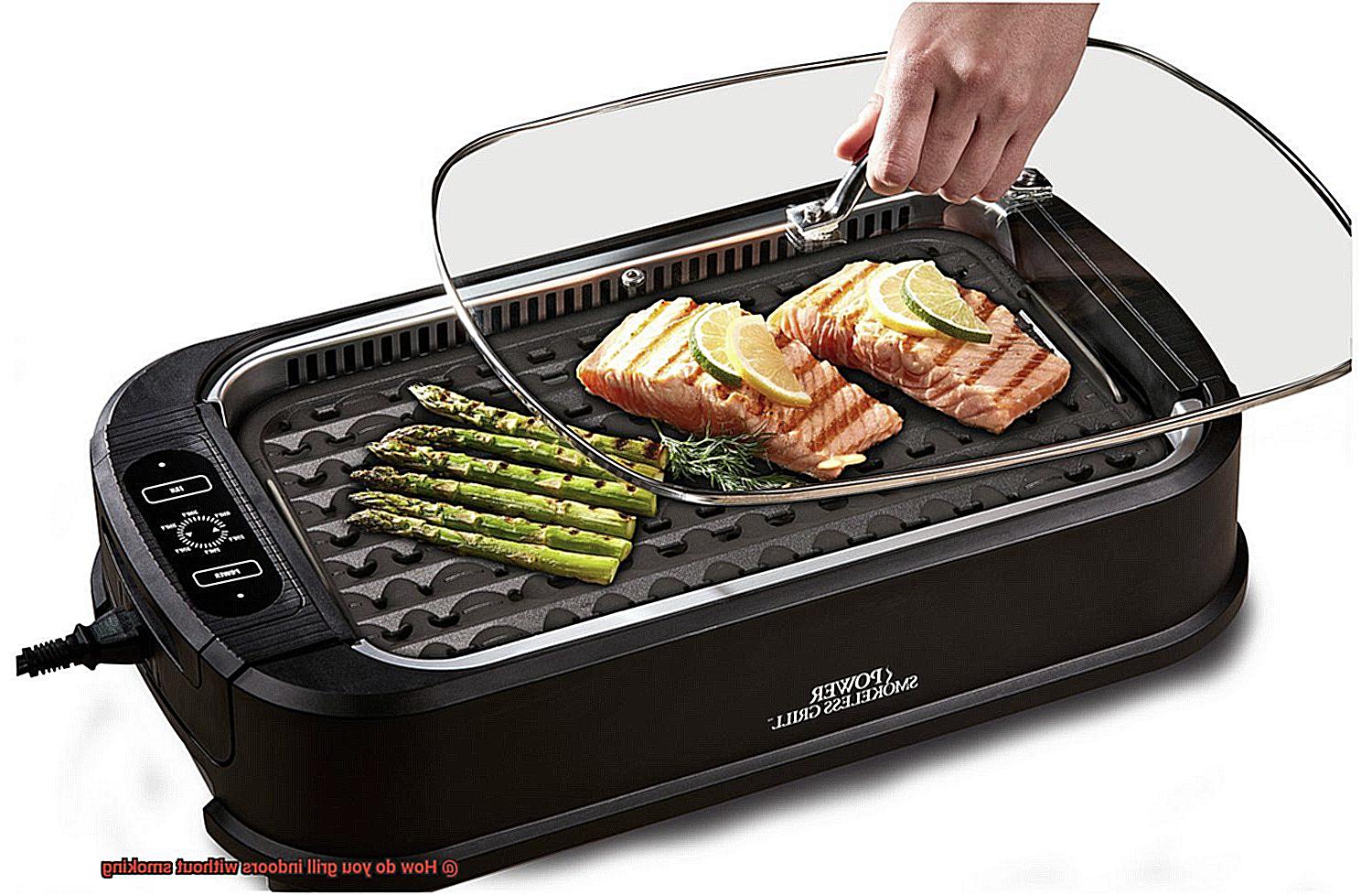
Look no further than the simple yet essential step of patting your meat dry with paper towels.
Why is this so crucial, you ask? Well, when meat is wet, it can create steam upon hitting the hot grill or pan. This steam can cause smoke and prevent the meat from achieving a perfect sear. But when you pat your meat dry, you’re not only preventing these issues but also allowing for better flavor development through caramelization.
To achieve optimal results, simply use a few sheets of paper towels to soak up any surface moisture, pressing down firmly and repeating as needed until the meat is completely dry. Keep in mind that this technique works best for thinner cuts of meat such as chicken breasts, steaks, and pork chops. For thicker cuts like roasts or whole chickens, additional steps such as salting and refrigerating overnight may be necessary to draw out excess moisture.
zSu6w4yO2Tg” >
Also Read: How to sear a steak without smoking up the house?
Conclusion
Indoor grilling without smoking is not only possible, but it’s also a delicious way to enjoy perfectly grilled food all year round. But how do you achieve that mouth-watering smoky flavor without filling your home with smoke? Well, it all comes down to the right equipment and techniques.
When choosing a grill, there are several factors to consider. If you live in a small apartment or condo, an electric grill may be the best option. For larger homes with proper ventilation, gas grills are ideal. And for those who want a traditional grilling experience without breaking the bank, stovetop grills are a great choice.
Proper ventilation is crucial when indoor grilling to prevent smoke and fumes from filling your home. Use a grill with a built-in ventilation system or prioritize safety by clearing the area around the grill. You can also use a portable fan or open windows and doors to ensure proper airflow.
Prepping your food for indoor grilling involves removing excess moisture, seasoning with dry rubs or marinades, choosing lean cuts of meat, poultry or fish, and cutting food into smaller pieces for even cooking. Keeping an eye on grill temperature can prevent smoking mishaps while avoiding over-crowding the grill ensures evenly cooked food.
Elevate your indoor grilling game by utilizing marinades or dry rubs to add flavor to your meats. And finally, patting the meat dry with paper towels before cooking prevents steam from creating smoke and allows for better flavor development through caramelization.

